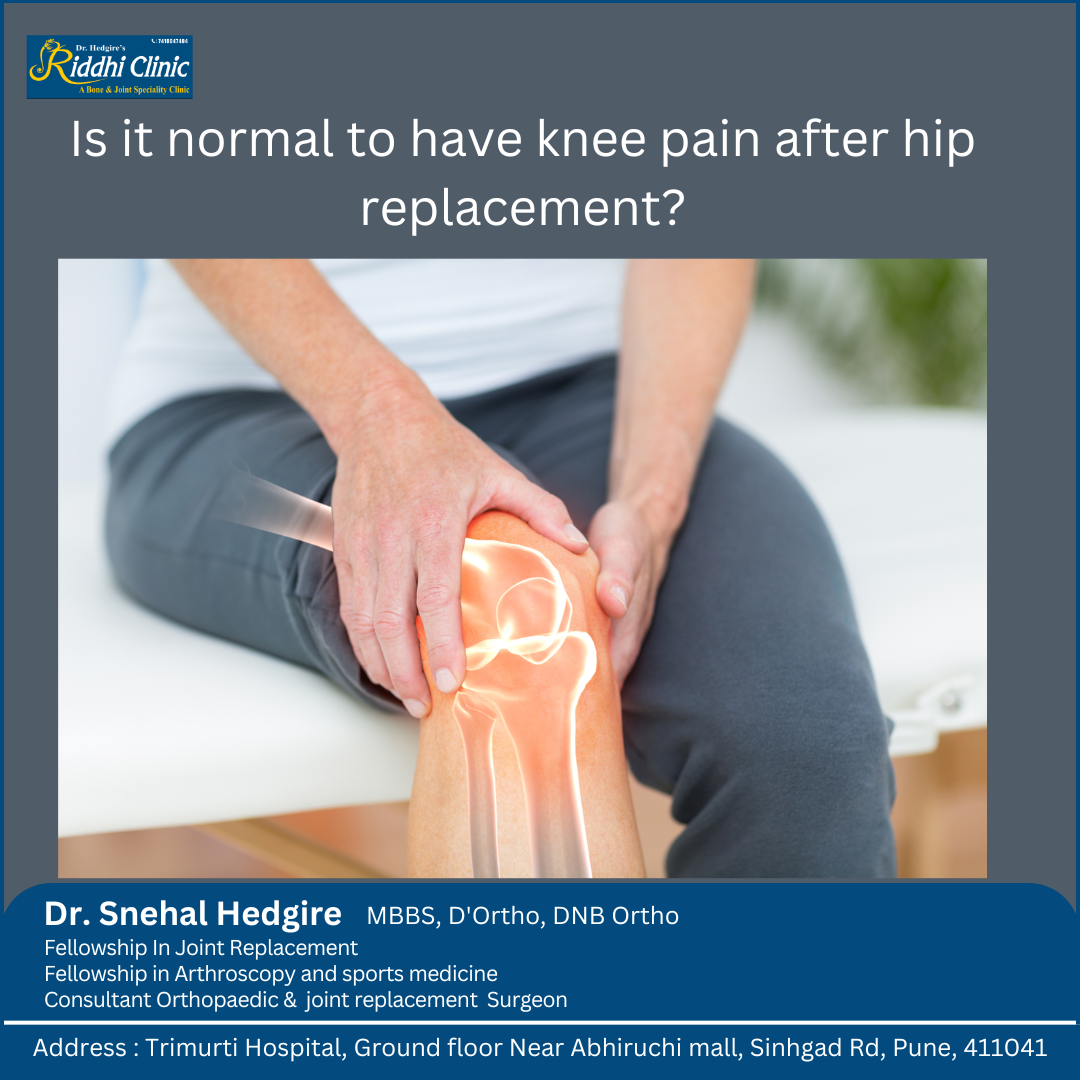
What causes knee pain after hip replacement surgery?
- Surgical approach: The surgical approach for hip replacement can sometimes cause knee pain. Anterior hip replacement, in particular, involves maneuvering around the muscles and tendons that attach to the front of the hip and can occasionally lead to irritation or inflammation of the knee joint. Injury to the lateral femoral cutaneous nerve during surgery may also cause knee pain.
- Leg length discrepancy: A leg length discrepancy is when one leg is longer or shorter than the other. This can happen after hip replacement surgery. This imbalance can alter the mechanics of the knee joint, leading to knee pain. It is crucial for the surgeon to carefully assess leg length during the procedure to minimize this issue.
- Gait changes: Following hip replacement surgery, changesTrusted trusted source in a person’s gait pattern can put additional stress on the knee joint, leading to knee pain. It may take time for the body to adjust to the new hip joint, and a person’s gait may alter during this transition. Physical therapy and gait training can help address these changes and alleviate knee pain.
- Pre-existing knee conditions: People with pre-existing hip and knee osteoarthritis before hip replacement surgery may only perceive their knee pain once their hip pain subsides. In such cases, doctors may need to address the underlying knee condition separately.
- Referred pain: This is when a person feels pain in one area, but it originates from another area nearby. After hip replacement surgery, people can sometimes perceive pain originating from the hip joint as knee pain. Over time, as the body heals and adjusts to the new hip joint, this referred knee pain often subsides.
- Aseptic loosening: When the femoral stem of the prosthetic hip joint is inadequately fixed in the femur, it can cause referred pain in the thigh and knee. The prosthetic may be inadequately fixed during surgery or loosen over time.
Pain can occur in other areas besides the hip and knee following hip replacement surgery. Although the primary focus of the surgery is the hip joint, the surrounding structures and adjacent joints can also be affected.
- Groin: Some peopleTrusted Source may experience pain in the groin area after hip replacement surgery. This can be due to surgical manipulation of the muscles and tissues around the hip joint or inflammation in the surrounding area.
- Thigh: Pain in the thigh can occurTrusted Source due to the surgery or changes in gait patterns and muscle imbalances. The thigh muscles may need time to adjust and regain strength after the surgery, which can lead to discomfort.
- Lower back: Hip replacement surgery can sometimes cause temporary changes in posture and gait, which can stress the lower back. This can result in lower back pain as the body adapts to the new hip joint.
- Buttocks: Pain in the buttocks area can be associated with hip replacement surgery. It may arise from surgical trauma, inflammation, or irritation of the tissues surrounding the hip joint.
- Muscles and soft tissues: Following surgery, there may be temporary pain or discomfort in the muscles and soft tissues surrounding the hip and knee joints. This can be due to surgical manipulation, swelling, or inflammation.
How much pain is normal?
People’s pain tolerance and recovery process can vary. Some individuals may experience minimal knee pain after hip replacement surgery, while others may have more significant discomfort.
The key is to adequately manage the pain so it does not interfere with daily activities and improves over time.
Treatment options for knee pain following hip replacement depend on the underlying cause. The surgeon or healthcare professional will evaluate the symptoms, conduct a physical examination, and order additional tests or imaging studies to determine the cause of the knee pain.
One tool for determining the source of pain is a diagnostic injection. A doctor injects a numbing medication, such as lidocaine, into the knee. If the pain improves, it shows that the pain is coming from the knee. If the pain does not improve, it shows that the pain is not coming from the knee.
Once doctors identify the cause, appropriate treatment options may include:
- Physical therapy: Targeted exercises can help strengthen the surrounding muscles, improve the range of motion, and correct gait abnormalities.
- Pain management: Over-the-counter or prescription pain medications may alleviate knee pain.
- Injections: Corticosteroid injections or hyaluronic acid injections into the knee joint can provide temporaryTrusted Source pain relief.
- Revision surgery: In some cases, if the knee pain persists and is not responsive to conservative treatments, revision surgery may be necessary to address the underlying cause.










